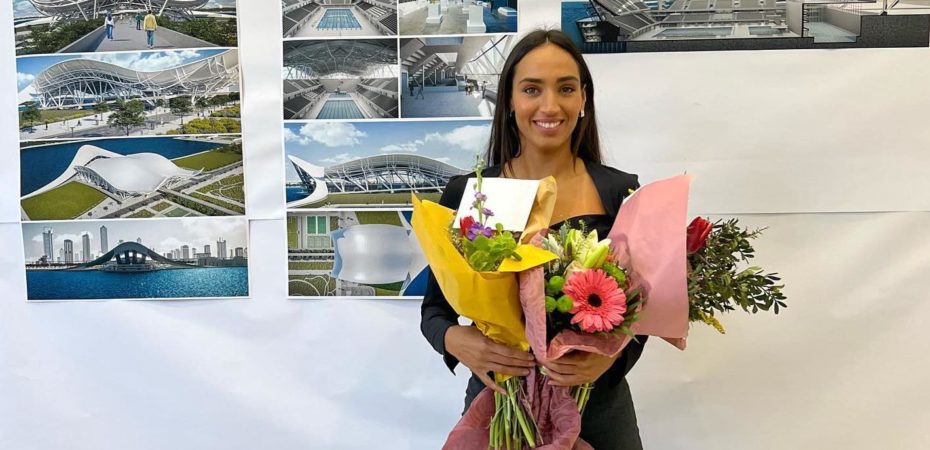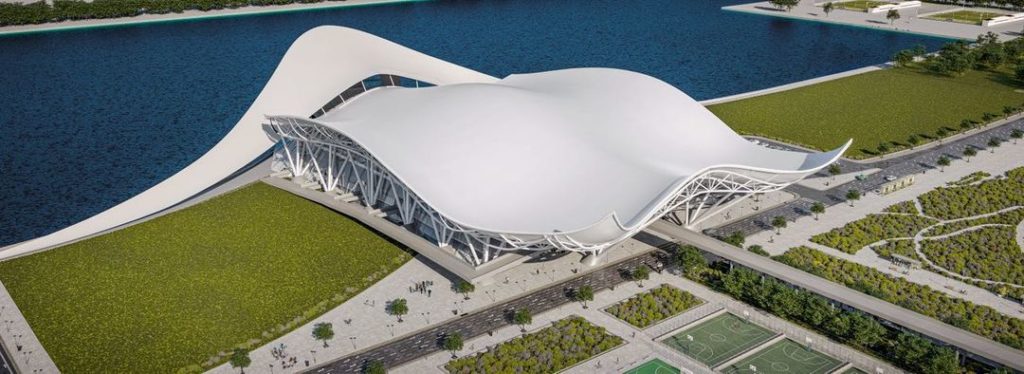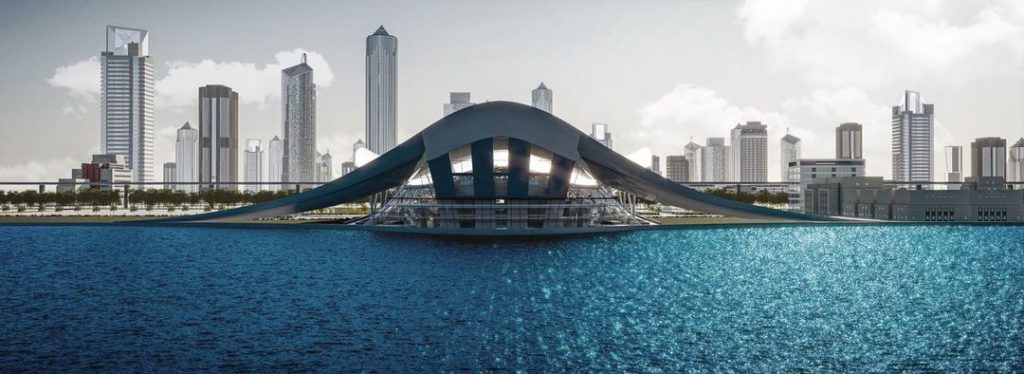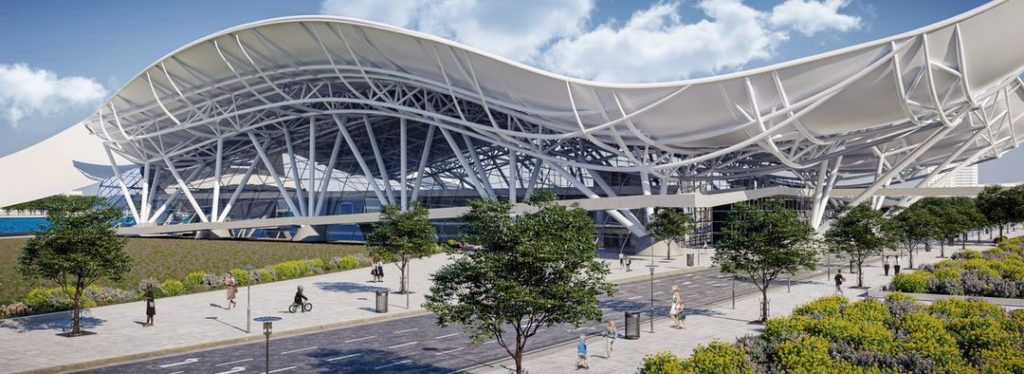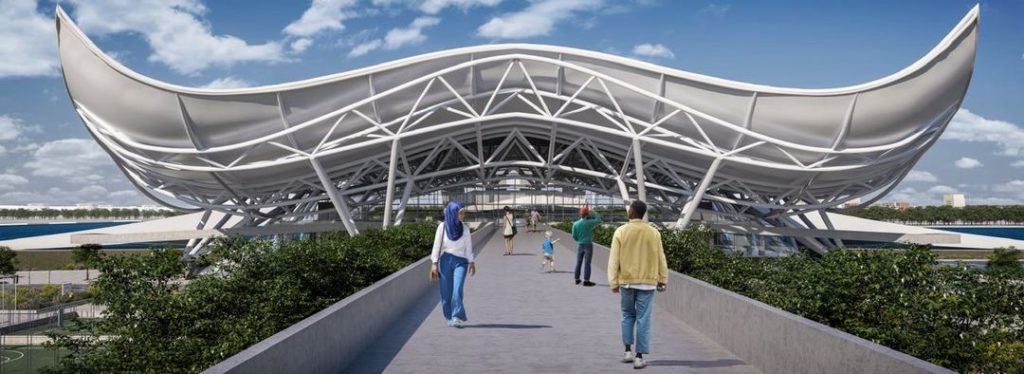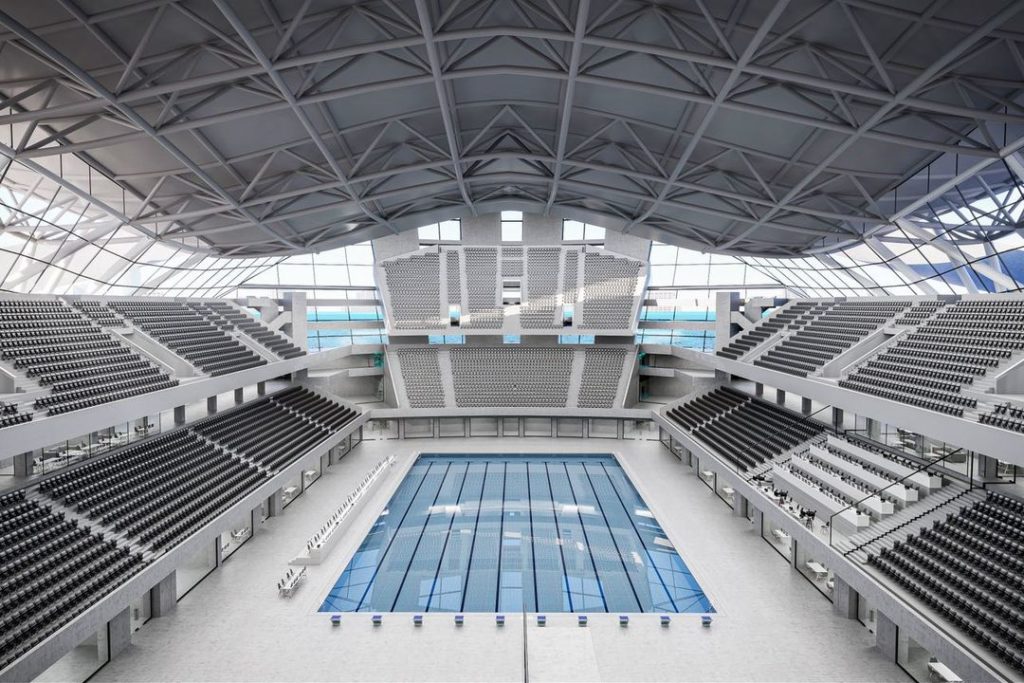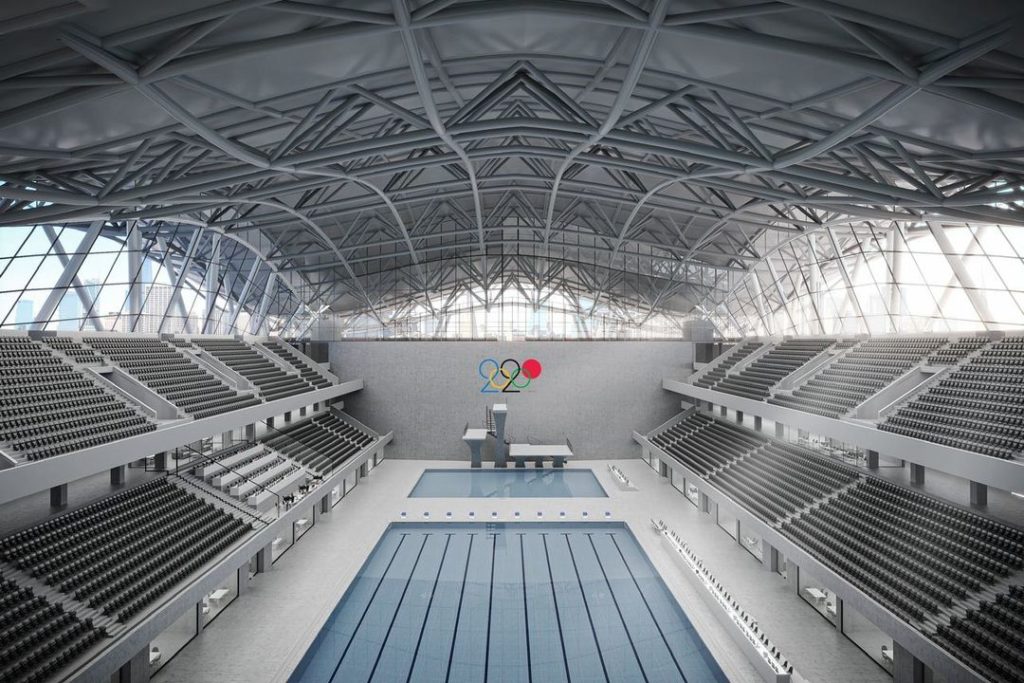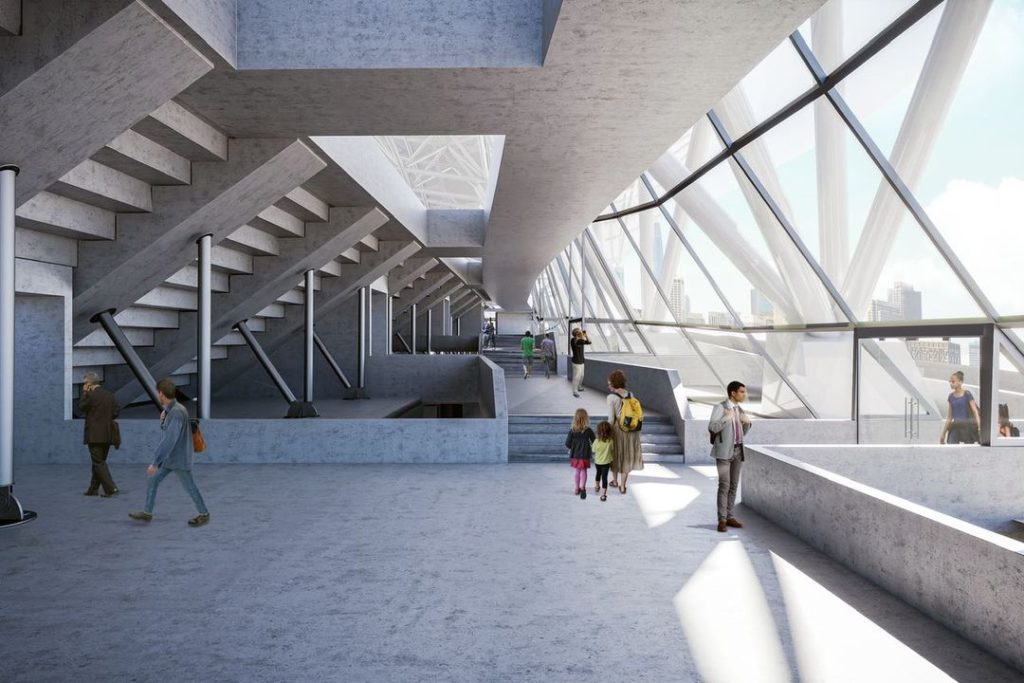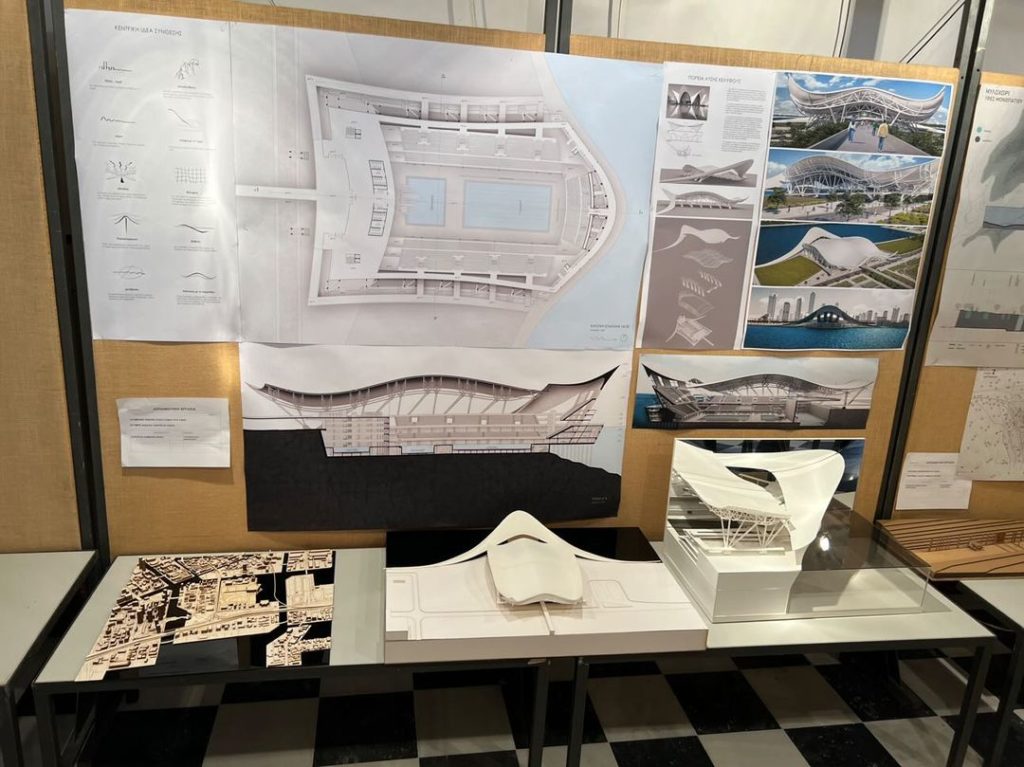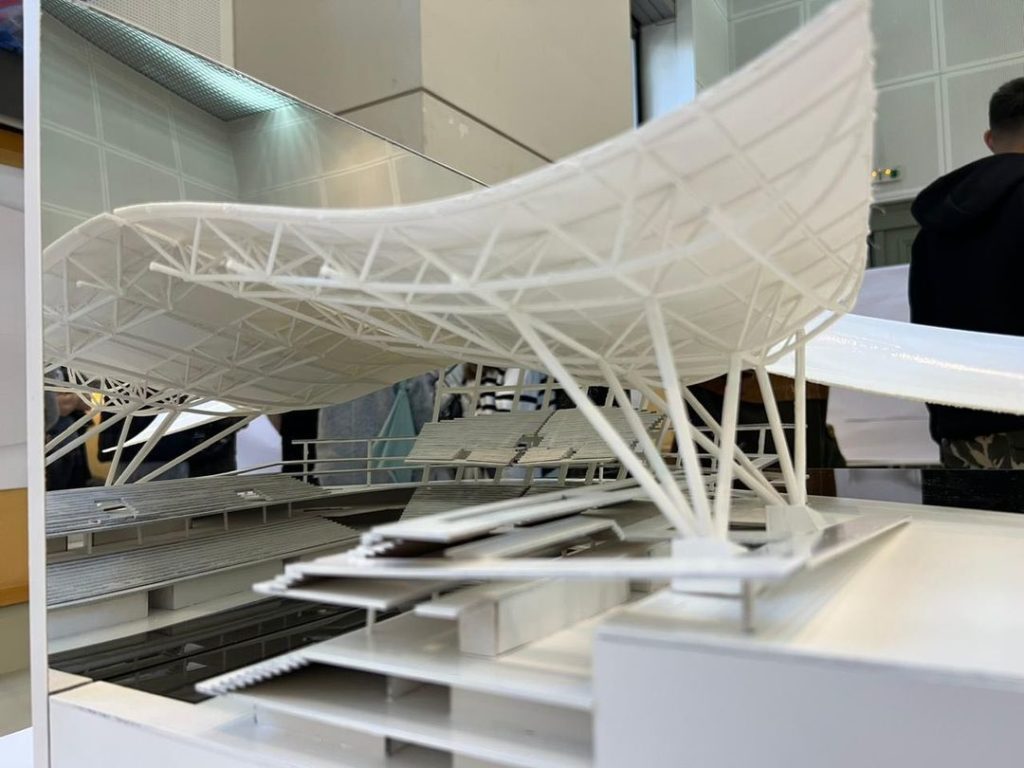Combining elite artistic swimming with university studies is undoubtedly not an easy feat. On top of training for eight hours a day, six days a week throughout the year, artistic swimmers also have to account for travels and competitions throughout the season.
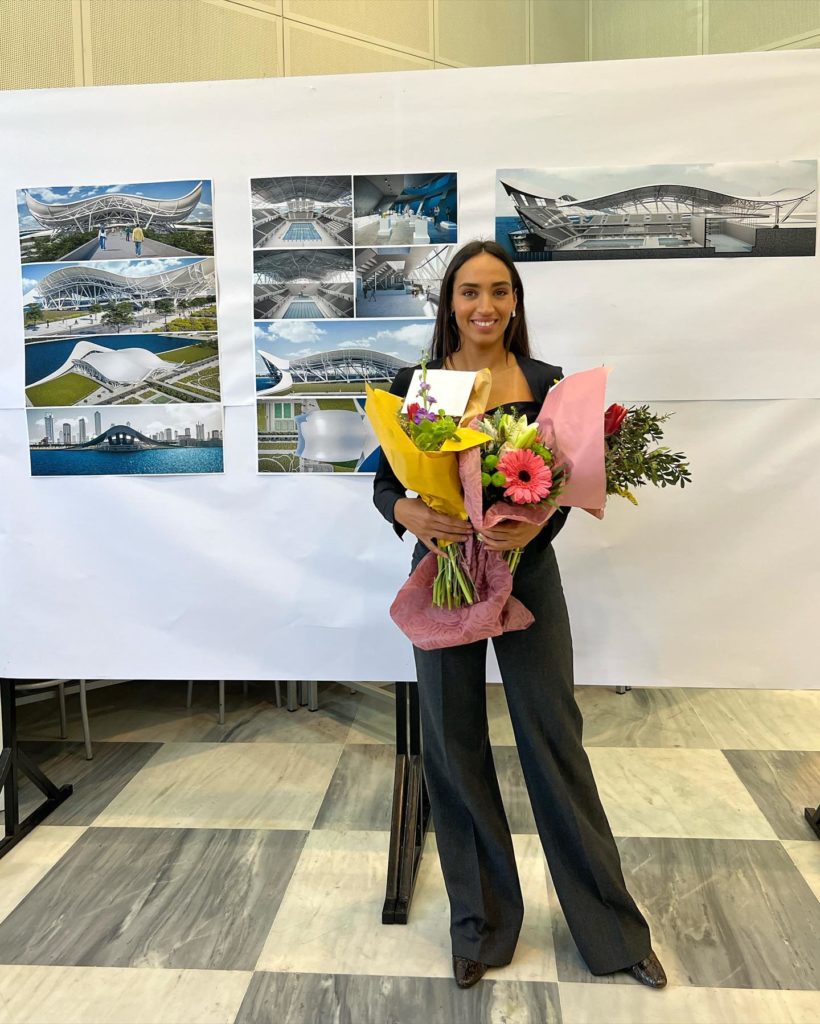
Maria Alzigkouzi was fully aware it wouldn’t be a walk in the park when she started her architecture studies back in 2015. “Regular” students take about five to six years to graduate. But obviously, they are not juggling an international sports career with its full-time training regimen at the same time.
Back then, the Greek artistic swimmer had already competed in two World Championships, two World Junior Championships, and two European Championships. Nonetheless, she wanted to pursue her academic goals, no matter how long it would take or how hard it would be.
After the 2015 season, she took a break from the national team to focus on her classes. Eventually, she decided to return at the end of 2019 to help Greece qualify to the 2020 Olympic Games. She wasn’t done with her architecture studies at all, but both objectives mattered to her and she was determined to make it work.
In June 2021, she and the Greek team successfully qualified to the Tokyo Olympics. In February 2023, the 28-year-old unveiled her thesis project, where she designed her own Olympic Aquatic Centre inspired by her experiences and affinities for the aquatic world.
Inside Synchro: Did you always want to pursue an architecture degree?
Maria Alzigkouzi: Yes. I was artistically inclined from a young age; I really loved drawing and painting. At the same time, I have always been fascinated by creating different kinds of architectural spaces and trying to capture the feeling one experiences in it. So, I enrolled in the School of Architecture of the National Technical University of Athens in 2015. I was unable to attend classes until 2016 due to training for the national team. Then, I stopped training for the national team from 2016 to 2019 and I attended my classes at the school. At the end of 2019, I returned to the team and I managed to combine both training and classes.
In 2021, after having completed all of the courses, I started my thesis while training for the Olympics at the same time. Studying architecture in Greece takes about five years. However, the athletes of the national team are permitted to extend the duration of their studies depending on their obligations on the national team. I presented my thesis and just graduated in February 2023.
IS: Tell us more about your thesis and how you used the Tokyo Aquatics Centre as an inspiration.
MA: Qualifying for the Olympic Games in Tokyo was a very good opportunity for me to design an Aquatic Centre from my own perspective as an athlete, combining my experiences from artistic swimming with architecture. Obviously, there was already one Aquatic Centre where the Olympic Games were held. So I designed my own proposal on a nearby plot in the same area, in direct contact with the sea.
It is very important for an architect to be physically present on the plot for the proper planning of a project. Going to Tokyo was a unique opportunity to study the area and to design an Olympic-standard Aquatic Centre. In the end, my experience as an athlete in the Olympic Games was twofold, not only athletic but also academic and scientific. Having the opportunity to study and actually be in this amazing facility inspired me and consolidated my knowledge. That led my thesis to a new level of competence and accuracy.
IS: Can you explain the design principles of your Aquatic Centre?
MA: First of all, I liked the fact that the Tokyo Bay area where the Aquatic Centre is located is in direct contact with the sea. This is an element in perfect harmony with our aquatic world. I placed half of the building on land and half of it in the sea, the same way aquatic sports start on land and end in the water. Just as the water is distorted the moment we dive in, I have distorted in the same way the boundary by curving the shoreline and placing my Aquatic Centre at that point.
Then, all competitive activities are “submerged” and located below sea level. As a result, spectators and athletes are fully immersed and become part of the aquatics world. In my opinion, one of the most intense personal moments for artistic swimmers is when we touch the water. We enter another world. This is also reflected in the entrance to the building, which is the entrance to the world of aquatic sports. Just as the water churns and creates ripples, the roof of the Aquatic Centre has an undulating shape combined with elements of Japanese architecture. The whole design is dynamic and fluid.
Finally, I have placed an underwater gallery in the part of the building that is in the sea. It will serve as a museum of Olympic aquatic sports, as my intention was to combine culture with athletics. So, the whole city can be visiting the Aquatic Centre on different occasions besides sports events.
IS: How long did it take you to complete this?
MA: In the end, completing my thesis took me two years with breaks due to my national team commitments and competitions, and with the last six months being the most demanding ones. The final result left both my professors and I completely satisfied since its uniqueness lay in turning my personal experiences in aquatics into an architectural design. I feel great for having completed my thesis, and I am overjoyed because I really love the field of architecture. At the same time, I feel refreshed and rejuvenated to commit myself to my team’s goals for this new season.
IS: How did you manage to combine this incredible project with your intense training schedule?
MA: It was very difficult. As we already know, artistic swimming requires a lot of hours of hard training. Competing at a high level, however, has taught us to have patience and discipline when it comes to setting goals and achieving them. The time spent on my two concurrent goals, training and working on my thesis, was very exhausting. It demanded many late nights and I truly had no free time for anything else.
All the sacrifices were worth it and they were highly rewarding. I consider it very important to combine competing at a high level with academic studies. Although it is very difficult, I believe that with proper planning, strong will, discipline and perseverance, everything is possible.
IS: Did you ever go through moments of second-guessing yourself or of wanting to give up?
MA: Many times, I found myself struggling between the difficulties of hard training and my strong desire to finish my architecture degree. I was under a lot of stress, and quite often found myself at a dead end. However, as we have learned in artistic swimming, success only comes with hard work. I believe that this can be a good example of how athletic abilities and academic or scientific pursuits can be combined for all athletes of our amazing sport.
IS: The synchro world has already witnessed your artistic inclination in the past. Back in 2021, you contributed to the Icarus storyboard, narrating the story of your team’s Olympic choreography. Last season, you designed the swimsuits for the team’s highlight routine. Can you tell me more about these?
MA: Yes, the design of Icarus project was the product of a working group that I was a part of. When it comes to swimsuit designing, I really like experimenting with designs that suit the team choreography. For example this year, I have some fresh ideas for the swimsuits concerning the team’s new choreography. I hope to contribute again and for you to see.
IS: What’s coming up for you this season?
MA: My next immediate goal is my obligations with the national team. In the span of less than a year, we have the European Games, the World Championships and of course qualifying again for the Olympic Games, which we are working hard on to achieve. Unfortunately, I can’t combine work with artistic swimming currently. But I will try to take advantage of my free time to prepare either for graduate school or for my professional career.
ARTICLE BY CHRISTINA MARMET
All photos are courtesy of Maria Alzigkouzi.
If you’ve enjoyed our coverage, please consider donating to Inside Synchro! Any amount helps us run the site and travel costs to cover meets during the season.

